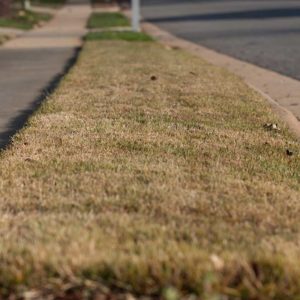Latest Posts
- Have a purpose when backyardingAugust 5 2021
- Study: Time outside alters our microbiomeAugust 4 2021
- Happy National Mutt Day from Mo-MoJuly 27 2021
- New home? Avoid these common mistakes in your yard.July 26 2021
- Infographic: Plan a backyard staycation this summerJuly 22 2021
Categories
Archive
July 2nd
Why it’s OK to let your lawn go dormant

The dog days of summer are upon us, and that means soaring temps in many parts of the U.S. Did you know that it’s alright to let your grass go dormant during dry spells and high temperatures? Many of today’s turfgrass varieties can handle these fluxuations. When grass goes dormant, the leaves turn brown as the plant focuses its resources on its roots. But the underground crown of the grass plant will survive.
Letting drought-tolerant grass species “sleep” is part of the natural plant cycle. The good news is most grasses are hardy. They will green up again when cooler, wetter conditions return.
Remember what TurfMutt’s buddy Green Ranger teaches us. Grass – even in its dormant state – is important to the environment. It traps carbon dioxide, reduces storm water runoff and shares oxygen. At the same time, grass uses its roots to prevent soil erosion and help create larger green spaces—in backyards, public parks and more. Plus, grass is the canvas for our outdoor living areas that provide a safe place for kids and pets to play and a respite from everyday stress.
To learn more about the value of our living landscapes, go to SaveLivingLandscapes.com.





